A Photo Essay
Tarabuco is a village about 65 kilometers from Sucre, known for its highly developed weaving techniques and quality textiles and especially for its very genuine “Indigenous” Sunday market. We decided to book a tour, which actually was only a bus provided to take the “Gringos” the 1.5 hour from Sucre to Tarabuco and back for 25 Bolivianos or 3.2 USD.
We went there with low expectations, especially after what we had experienced at the Sunday market in Pisac, Peru, which was packed with busloads of tourists. Well, Tarabuco is touristy for Bolivian standards, with a few small groups of tourists strolling around this rural market, but we were pleasantly surprised to discover a far more genuine market than we had expected.
The local population must be nearly solely “Indigenous” and the number of farmers wearing traditional clothes was overwhelming. Most interesting are the various head dresses, some look like leathery brown helmets, others resemble dark blue woolen ski hats. The most intriguing ones are worn by women, they can best described as fez-like black hats decorated with elaborate bead work in front. Often strings of beads are dangling right in front of the eyes.
Most men wear crème white pants and a stripped poncho, whereas the women are wrapped in what seems a big blanket, closed with a huge pin. All the farmers seem to be of a small frame, rather dark skinned with faces showing their hard lives. Many have all teeth missing except one or two. By the way, a common sight here in Bolivia is people whose individual teeth are framed with gold.
The men seem to be eternally attached to their bags of coca leaves and are chewing constantly. What used to be woven bags for carrying coca leaves are now green and transparent plastic bags. There seem to be a particular movement nationwide how to put these leaves into the mouth, it always looks the same, a bit like nibbling at first and then shoving it back into the already bulging cheek.
We shopped very local products: Heidi bought a “Cholita” blouse and put it on right away. Her new outfit caused a lot of head turning and surprised looks, obviously a sight unknown. Then brightly colored spices caught our attention, which could also serve as decoration back home and last, who can leave Bolivia without at least once shopping coca leaves, although we do not know what to do with them yet …
Given this colorful crowd we spent little time looking at the famous weavings, which we had already seen and bought in the “Museo Textil-Etnografico” or Museum of Indigenous Arts in Sucre. This museum is indeed a non-profit organization created by two Chilean anthropologists and aims at revitalizing, supporting and promoting this “Indigenous” art of producing textiles. 62% of the price of a textile sold goes to the artist. What we saw at the museum was actually much finer than what was offered on the market, but also much more expensive. But we felt this project should be supported and besides, the piece we bought is very elegant and unique.
The other spectacle of the trip was the company of four shoe-shine boys, aged 10-13, who managed to slip on our bus in Sucre and had a day full of adventures. They were real characters and quite funny, so lots of people bought them food, sweets and taught them phrases in English.

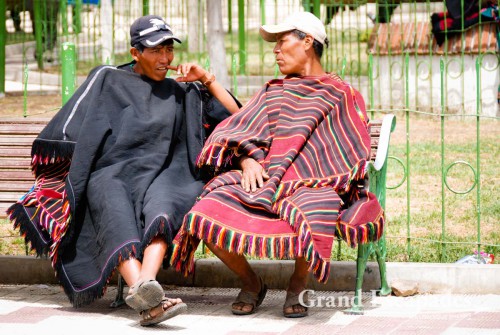
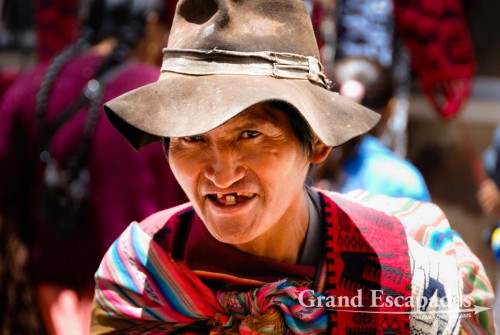
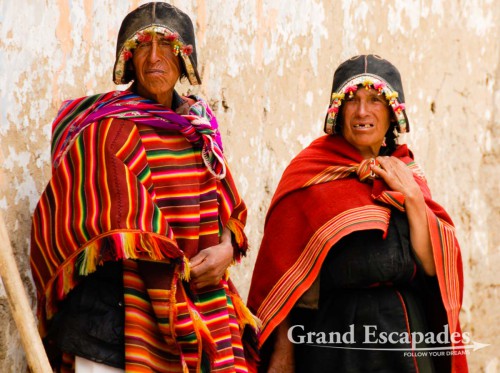

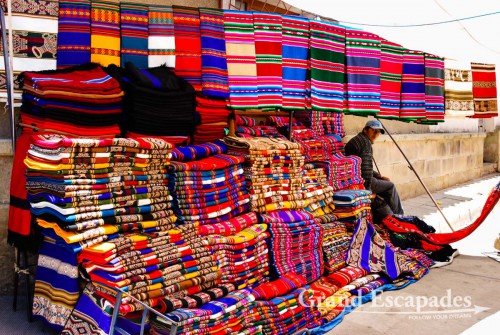
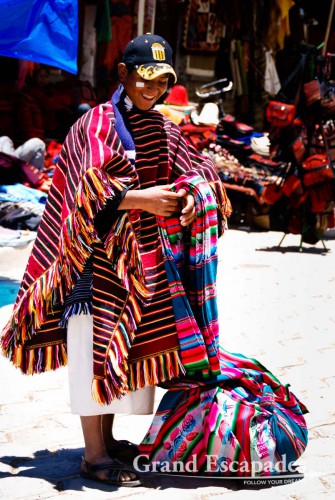
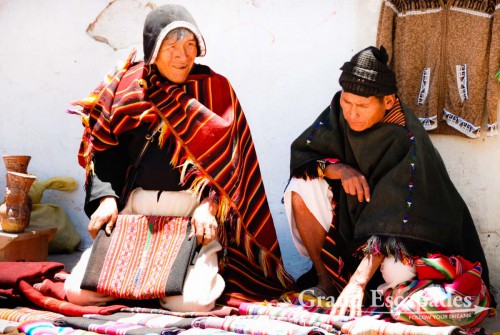
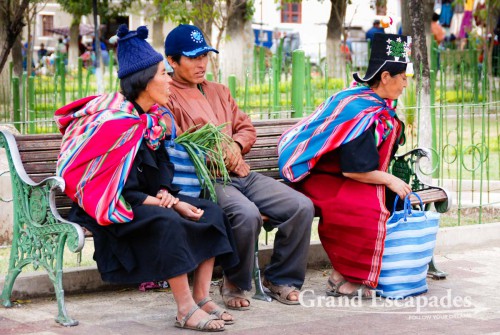
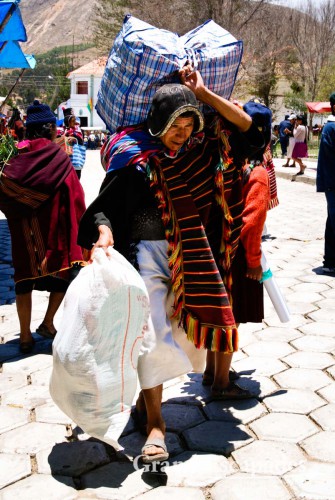
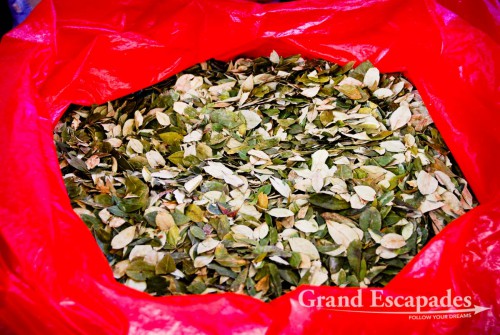
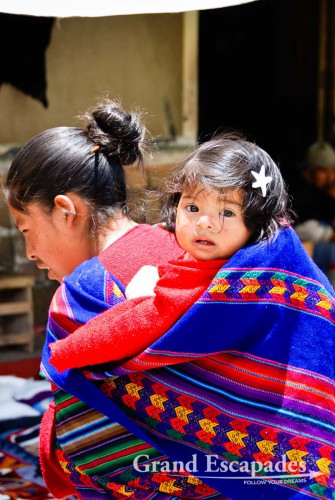
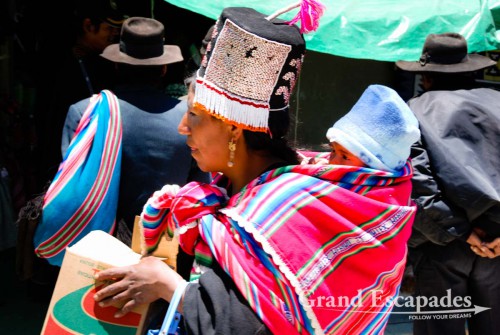
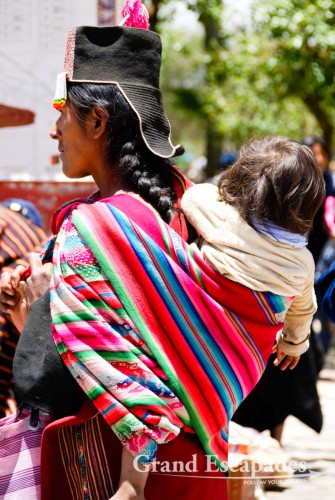
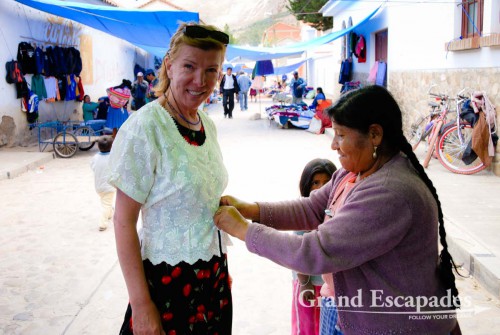
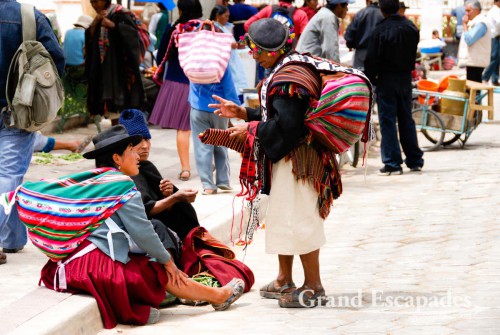
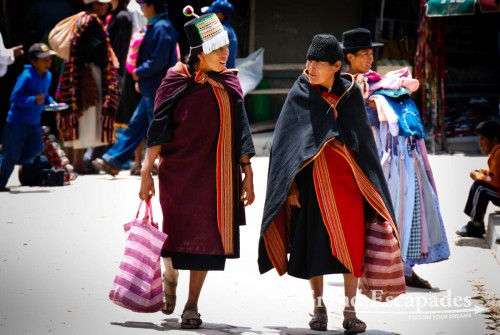
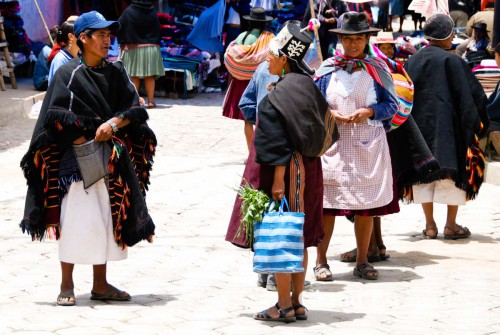
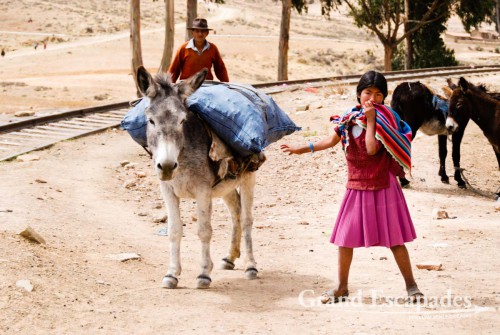
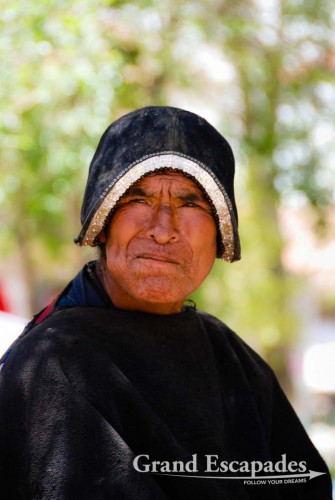
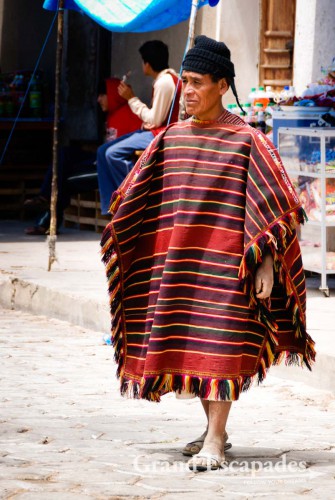
No comments yet.